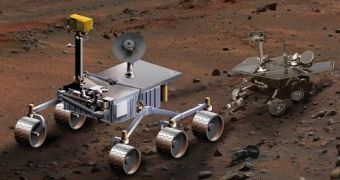The most advanced rover ever to roam the Martian surface, the Mars Science Laboratory, is still undergoing final development stages at NASA. It has already surpassed the cost that the agency initially estimated for its building operations by a hefty amount, now engulfing more than $1.5 billion, with a final estimated cost of about $2 billion. While deciding to cut back on its price as much as possible, NASA opted for removing a $2 million sample storage box from the device.
The compartment was already built (though after the original list of scientific goals was complete) and was supposed to be used for storing samples of soil that the rover lab would have already analyzed. The samples were slated to be returned by a future mission dedicated to that respective retrieval task. But now NASA revised their decision and stated that the device was "of low science value" and "wasteful" on resources that could be better used in other ways.
"The cache would have tied our hands to some extent," explained Caltech's MSL project scientist John Grotzinger, quoted by Herald Tribune. "Now it restores our freedom." This raises a series of legitimate questions and, obviously, a large amount of criticism. Thus, if the box was of low priority in the first place, why was it built at all? Furthermore, it might have taken many years before a sequel mission would bring the samples back, and they might have degraded by that time.
Also, if they were already analyzed by the MSL, would the expense of building this compartment, carrying it to Mars, have samples stored, as well as the much larger cost of their returning to Earth be really worth it? Alan Stern, NASA's former head of space sciences has even more drastic views, "The Mars program is slowly committing suicide in front of our very eyes. The only concrete step toward a sample return has been tossed after it has already been built. How does that save money?". The only good news, though, is that this operation leaves more room for other less "of low science value" devices.

 14 DAY TRIAL //
14 DAY TRIAL //